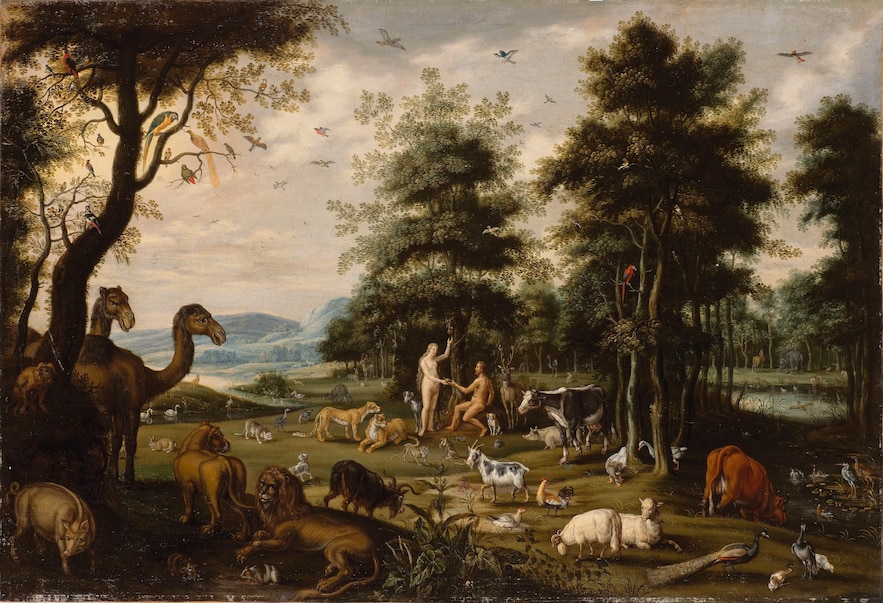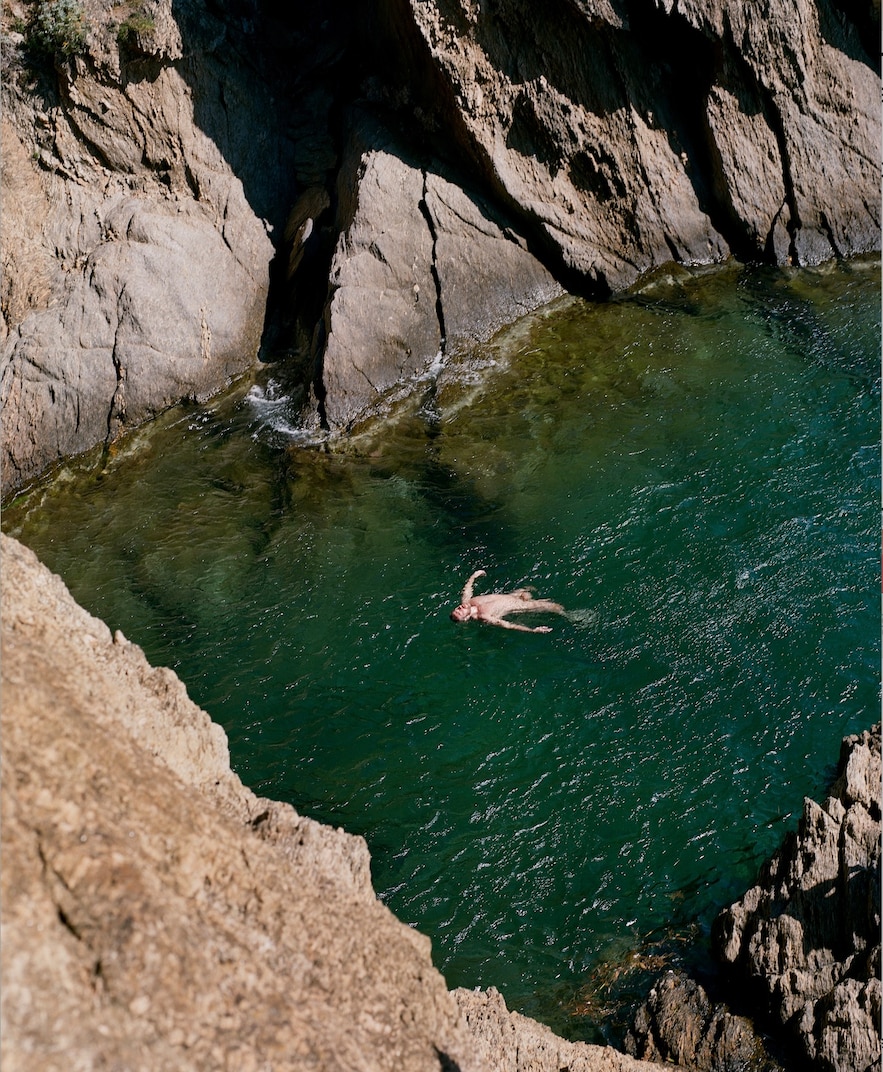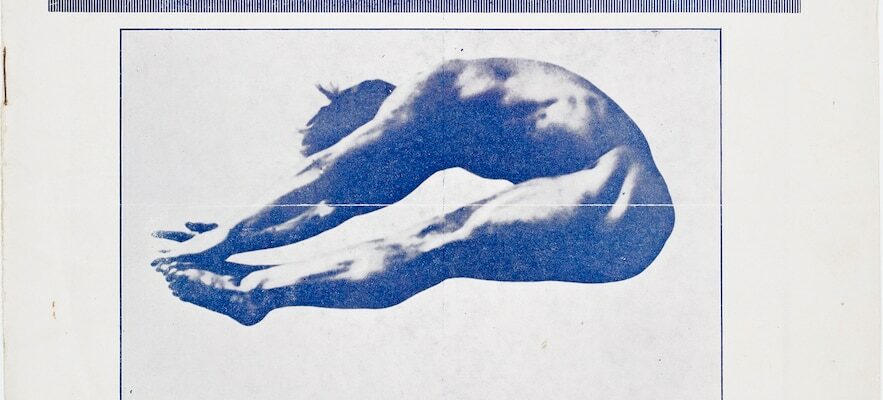“Could living naked in a community to commune with nature be the secret to happiness and health?” This is the question posed by the Mucem in Marseille, as a preamble to its presentation of Naturist paradisesthe first major exhibition on the subject in France and visible until December 9. Spread over 500 square meters, hundreds of photographs, films, works of art, objects and archival documents are displayed in a setting of palisades and reeds. An ode to the sun that seems to answer affirmatively to the question opening this very documented journey where there is a lot to read – needless to say that you can’t go around it all in just an hour.
This is because the theme, particularly the question of its origins, is nourished by diversity, like the eclectic quartet of curators, formed by the philosopher Bernard Andrieu, the director of the Villa Noailles Jean-Pierre Blanc – both fervent followers and defenders of the practice –, the curator Amélie Lavin and the academic David Lorenté.
A medicine of hygiene
In Germany, Switzerland and then France, the first naturists were disciples of Hippocrates who rejected the galloping industrialization of Europe in the 19th century and invited bodies to strengthen themselves through contact with nature: bathing, breathing pure air, exposing themselves to the sun’s rays. Nudity was then only one element among others in this fusion with the elements, which combined healthy living and vegetarianism – we consumed neither alcohol nor meat and we did outdoor sports to better recharge our batteries. A gospel of well-being carried, among others, by Dr Durville, two brothers who wrote Make your body (1933).
Little by little, the medical dimension gives way to more hedonistic practices. Clothes fall off, the pleasure and freedom of undressing are experienced in small protected enclaves of nature.
“Living Fully”, No. 94, June 1931.
/ © Private collection © Photo François Doury
The Quest for Eden
From its beginnings, the practice was part of the fine arts. The pioneering doctors of naturism extolled the virtues of physical exercise through idealized images of thin and athletic bodies, based on the model of ancient statuary. Very early on, the word paradise became a widely used term among naturists, some referring to the iconography of Adam and Eve naked in the heart of lush nature, taken up on canvas by many artists over the centuries, to illustrate their search for a lost paradise.
At the beginning of the 20th century, orientalist painters echoed the European fantasy that saw this quest for paradise blend into a colonialist vision, where non-Western lands were perceived as “wild Edens”. Later, eminent creators – photographers, choreographers or intellectuals – would accompany the emergence of French naturist communities, contributing greatly to their international influence.

Isaak van Oosten, “The Earthly Paradise, Adam and Eve among the animals of creation”, 1625-1650.
/ © MBA, Rennes, Dist. Grand-Palais Rmn / Louis Deschamps
The paradox of French naturism
If the Freemasonry culture (“free body culture”) became established in German customs at the end of the 19th century, in France, we had to wait until the interwar period to begin the history of these micro-societies. The naked body remaining marked by shame and censorship, they swarmed out of sight, in enclosed places, private castles or islands. The temperate climate and the presence of three seas favored their blossoming and development almost everywhere in our latitudes, with no equivalent in other European countries, except Switzerland.
Although France is now the world’s leading naturist tourist destination with 4 million visitors each year, its relationship with nudity remains ambiguous. In 1994, the offence of indecent exposure was abolished, but to be replaced by that of “forced sexual exhibition in the sight of others”: undressing in public spaces, or on one’s balcony in full view of everyone, is therefore an offence, unless one undresses in the few “authorised” places, such as campsites or “dedicated” beaches. Conversely, Germany, Switzerland, Great Britain and the Scandinavian countries have long decriminalised “bare bottoms”, freeing them from any sexual connotation.
“Gymnity” at Sparta-Club
Among the most emblematic naturist communities is the Sparta-Club, established in 1928 in the park of the Château de Garambouville (Eure) by Marcel Kienné de Mongeot, a physical education teacher, a fierce campaigner for complete nudity – or “gymnité” – and co-founder with Dr Viard of the hygienist review Live. Moved to the Jan manor in Fontenay-Saint-Père, in the Yvelines, the Sparta-Club finally found a lasting anchor at the Aigremont castle in Chambourcy.
Here again, it is a healthy practice for the body that is forbidden there, removing any erotic intrusion: “If we were in the habit of seeing our contemporaries in their simplest attire, the attraction of curiosity would disappear, taking with it the desire that only love would give rise to”, Kienné de Mongeot insisted in 1924.

“Naked in the Lavantine coves”, June 2021, photograph by Raphaël Chatelain.
/ © Raphaël Chatelain
From the Levant to Agde, a perennial culture
In 1929, the adventure of Physiopolis, on the island of Platais, near Paris, was launched by the Durville brothers. The following year, they acquired 65 hectares of Levant, off the coast of Hyères, in the Var, to develop Héliopolis, “a simple rustic city where lovers of air and sun will come, in the calm of splendid nature, to rest from the fatigues of the artificial civilization of cities, with the only luxury of a high ideal and the only concern for robust health”. In 1950, the first French Naturism Foundation was created under the leadership of the Lecocq couple who created the Centre héliomarin de Montalivet, in Gironde, the same year.
A handful of summers later, struck by the German tourists who come here to pitch their tents and don’t bother with a swimsuit for a dip, Paul and René Oltra, winegrowers in Cap d’Agde, improvised a family camp inspired by this lifestyle from across the Rhine. An immediate success. Over the years and real estate investments, Agde has become a reference for naturism, even if the incursion of “libertines” from the 1980s onwards has somewhat blurred the image of the seaside resort. But naturist culture endures, as the Mucem reminds us, which plays the game to the core: one Tuesday a month, “naked tours” of the exhibition are offered to enthusiasts. And the appointment book is always full.
.
